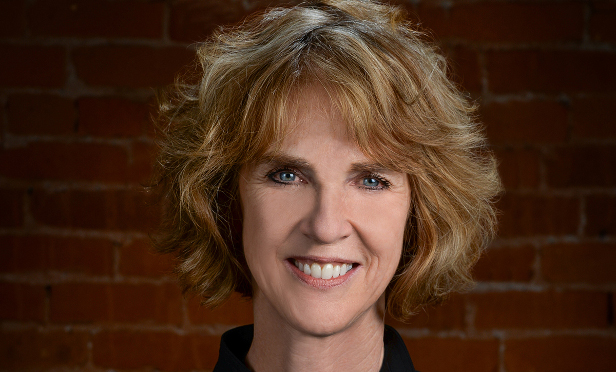 Benezet: “You need to start with that conversation and define leadership for your company—not just leadership at the top, but throughout the company.”
Benezet: “You need to start with that conversation and define leadership for your company—not just leadership at the top, but throughout the company.”
CHICAGO—As more millennials ascend the ranks in the workplace, how to cultivate the next generation of leaders is at the front of most organizations’ strategies. It’s a delicate dance that requires self-awareness from current leadership, Julie Benezet, founder and managing principal for Seattle-based Business Growth Consulting LLC, tells GlobeSt.com. Benezet, a former Amazon.com executive, will be one of the keynote speakers at NAIOP’s CRE.Converge 2017 conference here Oct. 10-12. She will be addressing the topic “Navigating the New: Leading and Succeeding in the 21st Century.” We spoke with her about formulating a leadership strategy and getting past the uncertainty that leadership presents.
GlobeSt.com: How can companies formulate a leadership strategy?
Benezet: The first thing that should be done is to define what leadership means to your company. Too many companies see it as a generic thing—leaders are supposed to set the vision, and align, motivate and inspire their people. These are good traits, but they don’t address what a company really needs. Where is your company on the development curve? Are you experiencing fast growth, coming out of a recession, repositioning yourself in the market? Are you in a toxic environment where you have to redo the culture? You need to start with that conversation and define leadership for your company—not just leadership at the top, but throughout the company. You have to have the same coordinates: What is your company strategy, its culture and aspirations? What does the company want to be?
Then, you code those into a list of traits that give a profile of what leadership is at your company. That becomes your organizing grid based on which you hire, promote, fire and evaluate. It is your company’s DNA that reinforces the key company growth drivers.
Next, what are the specific skills that would lead to a realization of this vision? What are the things a successful leader will be able to demonstrate to take this company into the future, given what it wants to do? Putting a leadership program together takes time. This is not done on the back of an envelope over lunch. It’s important to involve a lot of stakeholders. The effort is usually led by the human resources department, but a senior executive should own the initiative not only to help identify what is wanted but also to emphasize its critical importance and make sure it happens. Too often, people think of leadership as not in their purview, so they don’t think about it, to the detriment of their organization.
Once you have defined leadership for your company, figure out who would fit into this identity. Who are the people who have your company’s leadership traits or could grow into them? These are the people you sponsor as future business leaders, and for whom you create a program of hard and soft skills—everything from financial understanding to business development to communication, negotiation and conflict management. Be sure that program is consistent with your leadership objectives and regularly reviewed.
GlobeSt.com: Aside from leadership training, how else should companies approach the topic?
Benezet: It’s one thing to put a program in place and another to really have the verve behind it. It’s important to have the right attitude about it; you must make it explicit and deliver it. This starts with sponsorship from the top, someone to say, “We see this as absolutely critical to our success in the future. This is how we’re going to attract our talent, promote it, keep it and bring it to the top.” This explicitness takes it out of the back hallways where a lot of times promotion takes place. You need to create a pathway.
Often, companies will bring me in because they keep losing people who are vital to their future. They want to know what’s going on. These employees don’t see a pathway to leadership. They see it as a political thing: Joe likes Suzy or Suzy likes Marco, and that’s what makes these people the next leader. It’s not based on merit, but on who they know, and it’s a turnoff. If you’re serious about leadership, you have to be serious about putting in objective measurements that give people a shot at making it. So often great talent streams to the door because it’s not clear. And it’s not just about communication. When you put it out there, “Here are the rules of the game,” you relinquish control. A lot of executives don’t want to do it or see it that way. They’re running the company the best way they know how, but people exit because they know the person at the top is never going to let go of their authority. Also, for many of these executives, a lot of time is spent doing their day job, so they don’t know how to think about it. It’s important to demystify leadership.
GlobeSt.com: How can companies get past the discomfort that the uncertainty of leadership presents?
Benezet: They shouldn’t get past it. Discomfort is a fundamental part of being a leader. Your job is to find new ideas to make things better. It has a nervousness baked right into it. Companies should recognize that and accept it. In order to try out these new ideas, you need to enter an experimentation phase where the outcome is unknown and failure is okay. You don’t know if you’re going to succeed. It requires the attitude, “We’re going to move together to test these ideas, try them out whether we succeed or not, and learn from our mistakes.” It’s important to learn from what you do and push forward.
Also, companies need to spend the time it takes for leaders to develop. Leaders aren’t built overnight. There’s a whole lot you can’t control, but accept that it’s going to take time to work it through, and when things go awry, hang onto your feelings and let them play out. Figure out what you can do about it and what you can’t. But first, you have to let your blood pressure go down.
GlobeSt.com: What else should our readers know about this topic?
Benezet: Think of leadership as a mindset, not a job description. It’s about approaching something as an attitude. How can I make things better by navigating through my own relationship with risk and strive to get to the other side of it? It’s not a list of to-dos. You go through the anxiety to create change and try to get other people to go along with you. The endpoint is an improved and better future. It’s very different from management, which is about implementing the known things. Leadership involves navigating the unknown, the world of new ideas and behaviors. The biggest unknown is yourself. Self-knowledge is power. The better you know yourself, the easier it will be to lead others.

















 Copyright © 2024 ALM Global, LLC. All Rights Reserved.
Copyright © 2024 ALM Global, LLC. All Rights Reserved.